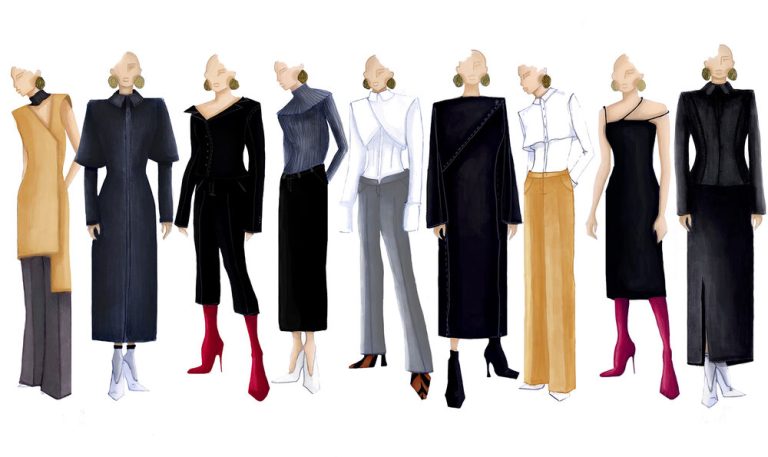The True Cost of Fast Fashion—Exploring the Environmental and Ethical Impact of Cheap, Trendy Clothing
Cheap, trendy clothing is certainly seductive. The thrill of a $15 dress, a new wardrobe for every season, and the rapid-fire release of “must-have” items makes fast fashion an easy habit to fall into. Retailers have perfected the art of delivering catwalk trends to consumers in a matter of weeks, creating a cycle of consumption fueled by low prices and instant gratification. But behind the bargain price tag and the temporary style rush lies a complex and devastating truth: the true cost of fast fashion is borne not by the consumer, but by the environment, garment workers, and the global economy.
It’s time to pull back the curtain on this industry and examine the pervasive damage caused by clothing designed to be worn a few times and then discarded.
The Environmental Catastrophe: From Farm to Landfill
The speed and volume of fast fashion production have turned it into one of the most polluting industries globally, second only to the oil sector.
1. Water Waste and Pollution
The textile industry is notoriously thirsty. A single cotton T-shirt requires about 2,700 liters of water to produce—the amount a person would drink in two and a half years. Beyond consumption, the industry is a major source of water pollution:
- Dye Runoff: Factories discharge vast amounts of toxic wastewater containing chemicals, dyes, and heavy metals directly into rivers, often in developing nations. These “rivers of color” poison local ecosystems and drinking water sources.
- Microplastic Shedding: Synthetic fabrics like polyester and nylon are essentially plastic. Every time we wash a garment, tiny microplastic fibers shed and pass through filtration systems, eventually contaminating oceans and entering the food chain.
2. Resource Overuse and Carbon Emissions
Fast fashion relies on cheap, non-renewable resources and a massive global supply chain.
- Fossil Fuel Dependence: Most fast fashion is made from polyester, a synthetic fabric derived from petroleum. The production process is highly energy-intensive and contributes significantly to greenhouse gas emissions.
- Landfill Saturation: The “wear once, toss it” mentality means clothing has an alarmingly short life cycle. The average American discards about 80 pounds of textiles annually. Because fast fashion garments are often made from blended or low-quality materials, they rarely break down or can’t be recycled effectively, leading to mountains of textile waste in landfills.
The Ethical Crisis: Human Cost and Labor Exploitation
The only way to achieve those shockingly low prices is by externalizing the true cost onto the human beings who make the clothes.
1. Substandard Wages and Working Conditions
Garment workers, predominantly women in countries like Bangladesh, Vietnam, and India, are paid poverty-level wages that are often insufficient to cover basic living expenses, let alone save money.
- Unsafe Environments: Workers are often forced to work long hours in poorly ventilated factories, exposed to toxic chemicals and dangerous machinery. The lack of adherence to basic safety standards, tragically exemplified by disasters like the 2013 Rana Plaza factory collapse in Bangladesh, highlights the systemic disregard for workers’ lives.
- Forced Overtime: To meet the rapid production demands dictated by constant trend cycles, workers are frequently subjected to compulsory overtime with little to no compensation.
2. The Cycle of Obsolescence
Fast fashion operates on a model of “planned obsolescence”—items are intentionally made cheaply so they fall apart quickly, compelling the consumer to buy replacements faster. This short lifespan benefits the retailer but trains the consumer to view clothing as disposable, further accelerating the environmental and ethical crises.
Shifting the Paradigm: What You Can Do
The power to slow down the fast fashion machine ultimately lies with consumer choices. Shifting toward a more conscious wardrobe doesn’t mean you can never enjoy fashion; it means enjoying it responsibly.
- Prioritize Quality Over Quantity: Invest in fewer, high-quality, timeless pieces that will last for years. Calculate the Cost Per Wear (CPW): a $200 jacket worn 100 times has a CPW of $2, while a $20 shirt worn 5 times has a CPW of $4.
- Embrace Circularity: Shop secondhand, vintage, and thrift stores. Buying pre-loved clothes extends their lifespan and reduces demand for new production. Explore clothing rental services for special occasions.
- Research Brands: Support brands committed to transparency, fair labor practices, and sustainable materials. Look for certifications and published ethical standards.
- Care for Your Clothes: Learn basic mending skills, wash clothes less often, use cold water, and air dry. This extends the life of your garments and reduces your environmental footprint.
By choosing slower, more mindful consumption, we shift from being part of the problem to becoming part of a sustainable, ethical solution.





